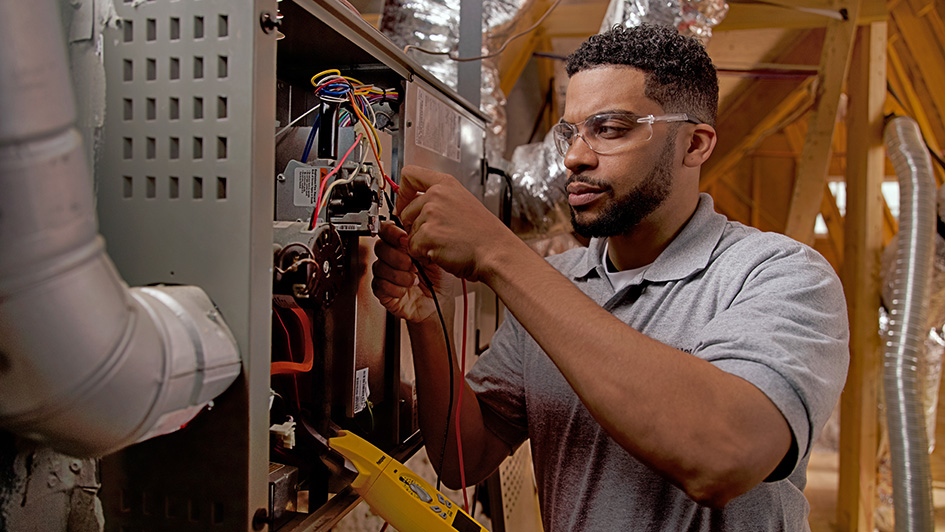
A furnace is almost always a background player at home, keeping you warm across the cold winter months. It regularly doesn’t get noticed until a malfunction appears.
One source may be that your furnace has a cracked heat exchanger. It’s a potentially dangerous issue, so it’s worthwhile to know the evidence of a cracked heat exchanger and what you should do if you are worried that may be the problem.
What Is a Heat Exchanger in a Furnace?
A heat exchanger helps transition heat from the combustion chamber of your furnace to the air that flows throughout the air ducts. It usually does this via coils or tubes that warm the air while acting as a barrier to keep gas produced in the combustion chamber, called flue gasses, from getting out into your home.
Is a Cracked Heat Exchanger Dangerous?
Given its important role, it shouldn't come as a surprise that a damaged heat exchanger can pose a risk. A crack in the heat exchanger can permit dangerous gasses – such as carbon monoxide, which can be lethal – to flow across your home.
For that reason, do NOT use your furnace if you think it has a cracked heat exchanger, as this could make your entire household sick. Contact an HVAC professional right away if you are worried your furnace has a cracked heat exchanger that needs to be repaired.
Four Warning Signs of a Cracked Heat Exchanger:
- Furnace shuts off: Cracks in the heat exchanger can cause your furnace to turn off.
- Strange Smells: If the air leaving your furnace has a powerful chemical odor, it could be a sign gasses are slipping through cracks in your heat exchanger. These byproducts, which can smell like formaldehyde, are a common warning sign.
- Carbon monoxide alarm is triggered or you notice poisoning symptoms: If a cracked heat exchanger is relieving carbon monoxide inside your home, your carbon monoxide alarm should go off or household members could experience signs of carbon monoxide poisoning. Complications include headaches, dizziness, weakness, nausea, vomiting or feeling tired. If your alarm goes off or you feel sick, leave the home as soon as you can and then call for help.
- Soot: If you find black sooty buildup near the exterior of your furnace, it’s another sign something may be seriously wrong.
What You Should Do if a Furnace Heat Exchanger is Cracked
If you suspect your furnace has a cracked heat exchanger, hire a professional with extensive experience in furnace installation Columbia as soon as possible so they can examine your system and, if necessary, handle a furnace heat exchanger replacement. Costs often fluctuate depending on the situation, but estimates run in the neighborhood of $1,000 to $3,000.
Fortunately, the good news is that heat exchangers are often protected by the warranty. It's a good idea to confirm the warranty paperwork on your furnace, as while the warranty may not cover the entire cost of repairs, it can significantly lower your bill.
How to Avoid a Cracked Heat Exchanger in Your Home
One of the best ways to prevent a problem in your furnace overall is through routine furnace maintenance. Furnaces offer the most benefits when they run efficiently. Calling a trained professional to inspect your furnace for worn-out parts, clogs in the air filters and other common problems can keep you from getting a big bill later on.
It’s also helpful to inspect your furnace filters every few months – it’s encouraged some filters be replaced every 90 days or sooner if they are dirty or grimy. While the filters are not part of the heat exchanger itself, the strain of pulling air through a clogged filter makes your entire furnace work harder to accomplish its job. And the harder your furnace has to work, the more strain parts like the heat exchanger will endure.
